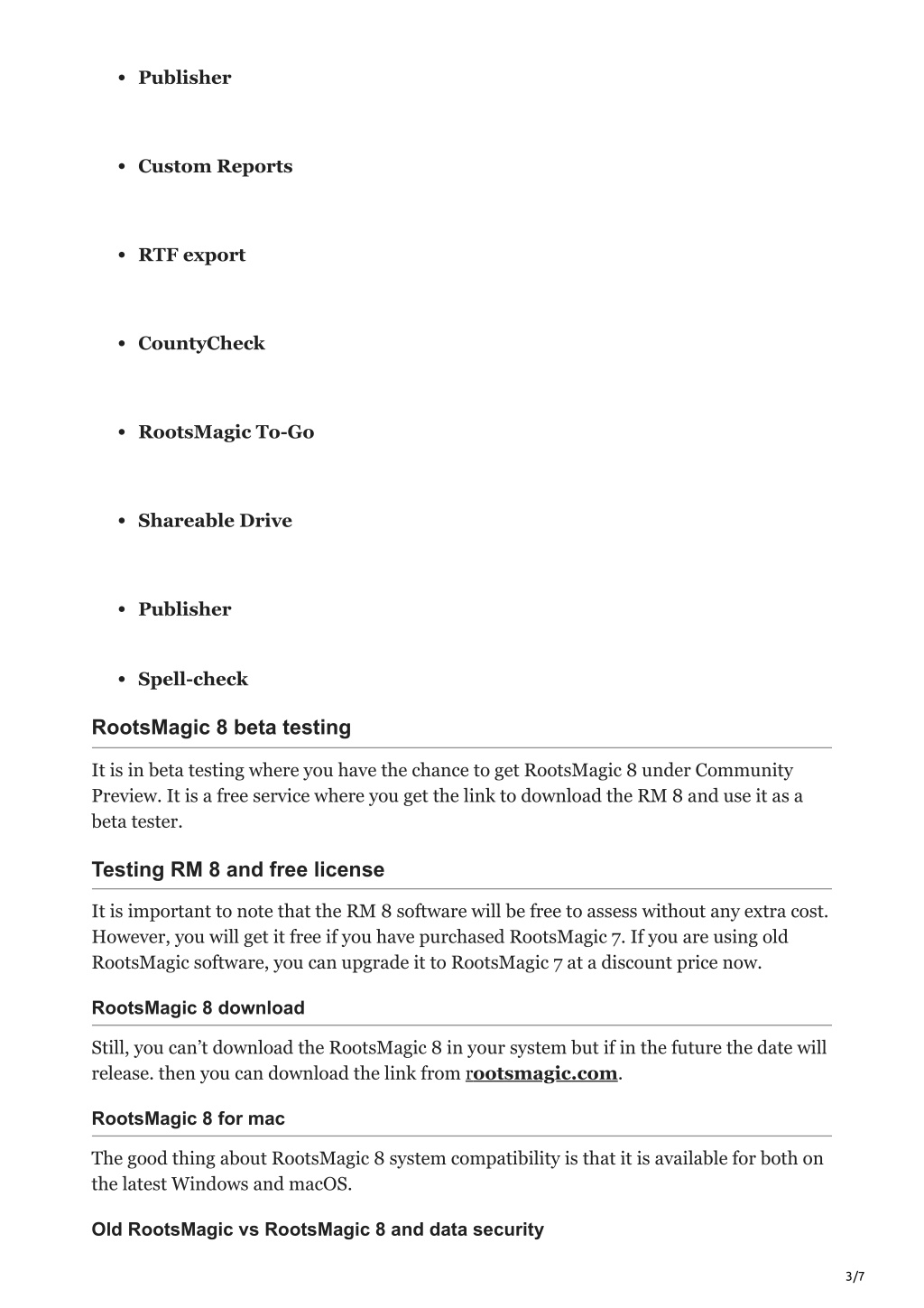

- #ROOTSMAGIC SOURCE TEMPLATES SOFTWARE#
- #ROOTSMAGIC SOURCE TEMPLATES CODE#
- #ROOTSMAGIC SOURCE TEMPLATES FREE#
- #ROOTSMAGIC SOURCE TEMPLATES WINDOWS#
#ROOTSMAGIC SOURCE TEMPLATES SOFTWARE#
There will always be special cases where any software come to short. Zotero have a lot better source, Bibliography and Citation/Reference possibility than Gramps.Īnd if you don’t like Zotero, use Jabref, or any other BiblTeX client, or buy Citava.Īnd it is very strange that most international Research Labs and Universities recommend Zotero as an alternative to Mendeley if it is so useless as you tare trying to make it.

Next version of Zotero have improvements, most likely more than Gramps will have in it’s next edition, if Gramps 5.2 ever get released, even though its, open source as well…
#ROOTSMAGIC SOURCE TEMPLATES CODE#
Yes, there is still some limitations in Zotero, but as Zotero, CSL is as you call it a “moving target”, whatever you mean with that, and at least, Zotero is supported either by native code or by a plugin, by a lot of other software, including most LaTeX clients, R Studio, Atom, VSC, Obsidian, Zettlr etc. the formats is useless for any kind of analyzes or research work outside of Gramps without a lot of reformatting work either using Excel or a lot of python code.
#ROOTSMAGIC SOURCE TEMPLATES FREE#
And actually the most limited software of all of the Open Source Free software I use, is Gramps, specially when it comes to interchangeable data formats outside lineage-linked genealogy, i.e. I’m Norwegian and have used Zotero for 3 years now in combination with Gramps and a lot of other research tools, without any problem. Any EE like solution is likely to fail because of the reasons mentioned above. In this case, one can argue whether all those layers are easy enough for aunt Martha, so maybe CSL is still the best choice. That’s sort of a three layer citation, where each layer may have an author, title, publication date, etc. That leads to weird constructs where you need seperate variables for similar elements like the name/title of an article, which appeared in a magazine, that you found on a DVD. One aspect that’s missed in all models mentioned here is, that they don’t understand the hierarchical nature of many sources that we work with. That’s why you can better rely on CSL, where types and variables are independent: That’s not a problem for them, because they don’t make translations anyway, but for us, it’s a problem.Īs far as I’m concerned, Zotero makes the same mistake as EE, meaning that for each type of source, you have a different set of variables, which effectively makes it a moving target. The problem with GEPS 18 was that it was based on EE, and even with a light version of that, you get hundreds of citation elements and templates, and that’s almost impossible to translate to the number of languages that we need to support in Gramps, which is about 40.Īlso EE by itself was never meant to be implemented in software in the way it was done in RootsMagic, which has more than a thousand templates. (Dunno about BSD) But it is JavaScript rather than Python.
#ROOTSMAGIC SOURCE TEMPLATES WINDOWS#
It is another free and open source project for Linux, Windows (including PortableApps) & macOS. Particularly since such a commitment of resources would only result in a fraction of their present features… while they more further ahead. Zotero already has years of development on these issues… that our project can’t afford to duplicate. It could be very superficial… Let Gramps query individually for a pre-formatted citation or for adding a source to/from their collection. How about a bridging implementation? Interface the APIs of Gramps and Zotero Research Management assistant. So the implementation needs some serious design work. Letting it evolve naturally has huge potentially to paint Gramps into a corner. And it is completely without document management capabilities. Moreover, the collection & organizing of supporting digital documents as Media Objects is heavily weighted toward picture collections. there isn’t enough structure to auto-generate high-quality inline references, footnotes, endnotes & bibliographies in standard formats. Agree that the system of Citation support needs another, much deeper look.


 0 kommentar(er)
0 kommentar(er)
